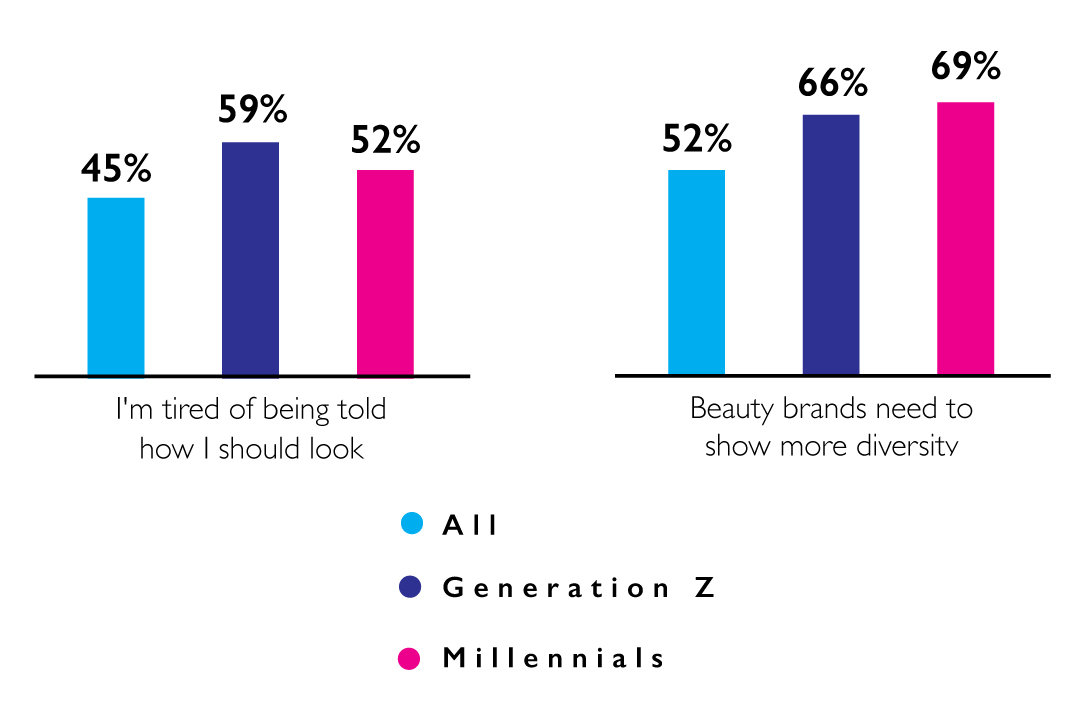Thought Leadership
Foundation of Success

Sophia Arconti
Account Director
May 26, 2021
Most categories, at some point in time, have been impacted and influenced by consumers’ changing interests or needs. The 1990s, for example, ushered in more widespread concern on the environment, and what were once niche brands rose to prominence by becoming more transparent on their “green” initiatives (Meyer 2010). These eco-friendly measures not only looked at the materials used in packaging but also the quality and sourcing of ingredients and how they impacted the people, places and animals that were part of a company’s supply chain.
The 2000s continued to carry these environmental causes forward while also adding a layer of focus to the human factor. With the advent of online research and social media, consumers sought answers to the following questions: Was a brand made locally? Was a real person behind it? Were employees treated well? Was a brand backed by a large corporation, and if so, was it actively involved in bettering local and/or global communities? This interest to learn more about a brand’s social and environmental causes has only continued to deepen and has since become table stakes for consumers. For example, 65% of US Millennials (aged 26-43) indicate they care more about social causes as they age while 49% of US Gen Z consumers (aged 13-17) assert that what a brand stands for is an important purchase driver (Boesel 2020). That being said, both challenger and established brands alike will need to integrate and communicate their values if they want to remain relevant to today’s consumers.
“Gen Z and Millennials are re-writing the rules of beauty. As key audiences in the beauty space, younger adults dictate trends have significant spreading power. As discovered in Mintel’s Beauty Influencers- US, February 2020 report, 61% of adults who follow beauty influencers want to see more beauty influencers that look like everyday people, and 60% want to see more unedited pictures on social media.”
–Mintel, Perceptions of Beauty Across Generations- US September 2020
Of the multitude of consumer categories, the Health & Beauty Aids (HBA) category has steadily been addressing consumers’ social and environmental concerns. Over the years, HBA brands shifted away from animal testing, incorporated more renewable resources, and gave consumers information on where and how their products were made (humanesociety.org). While environmental stewardship and transparency are still in high demand for consumers, the HBA category is also taking on an even stronger human focus – that of inclusivity. While this is not a new focus, it is one that has been brought to light more strongly in the past couple of years with 52% of polled consumers citing that beauty brands need to show more diversity (Hennigan 2020). One well-known brand that does exactly that is Fenty Beauty. Founded by singer/entrepreneur Rihanna in 2017, Fenty set out to create makeup for a variety of skin types and tones “so that people everywhere would be included” (fentybeauty.com). Pairing Rihanna’s celebrity status with traditional marketing, Fenty also went a step further with a strong social media presence, which continues to post several times a day to its roughly 10.5 million followers. No longer on the outskirts of the HBA industry, Fenty Beauty quickly turned from a challenger and into the mainstream by celebrating diversity front-and-center. With this relevant positioning, the brand was conservatively estimated in 2019 to be worth over $3 billion (Robehmed 2019).
However, Fenty is not the only brand that showcases inclusion along with environmental and social causes. Ah-Shi Beauty (ahshibeauty.com), which means “This is my beauty” in Navajo, has integrated a wide variety of values into the brand. Founded by Ahsaki Chachere, the brand is Indigenous, Black-owned and operated and boasts a range of foundations, powders, lipsticks and skincare products that are cruelty-free, hypoallergenic and paraben-free. Mrs. Chachere created the brand to “give Native American women a ‘seat at the table’” and provides employment opportunities to family and friends who live on and off the Diné reservation (Intner 2020). A purpose-driven brand through and through, Ah-Shi Beauty leverages social media to communicate the brand’s values while fostering one-on-one connections with consumers. Looking for a BB cream and lipstick, I recently messaged the brand’s Instagram account and Ahsaki greeted me herself. Within minutes, we were on a call and discussed everything from product ingredients to her quest to find the perfect manufacturing partner that wouldn’t compromise on her vision, and how she’s currently in Texas to keep her business going because access to reliable internet was not always found on the reservation. She then shifted to my skin tone and recommended the products that would work best for me, while demonstrating many of them on herself. After 15 minutes, I felt confident about what I would be putting on my skin, but more importantly, I was thrilled to support her brand and business. Ah-shi Beauty is undoubtedly one to watch (as is Mrs. Chachere, who is the definition of an entrepreneur with brands now entering into eyewear and coffee categories).
Social values, environmental stewardship and personal connections are current trends in the HBA category, and many corporations have taken note as well. One such success is Unilever’s Love Beauty and Planet which touts 100% recyclable packaging, ethically-sourced ingredients, and a grant program that invests in planet and community projects. In its first year, the brand earned more than $50 million and helped grow Unilever’s beauty and personal-care category sales by 4 percent (glossy.co). It has also expanded beyond HBA into home care, aimed at positioning the brand as a true lifestyle brand. With this, Unilever has found the perfect balance between consumer demand and brand relevance.
While consumer causes and values will continue to shift and evolve over the years, it’s the brands – large or small – that meet those consumer needs that will also continue to grow and evolve. Because the more consumers can see reflections of themselves in a brand, the more support those brands will receive in turn.

